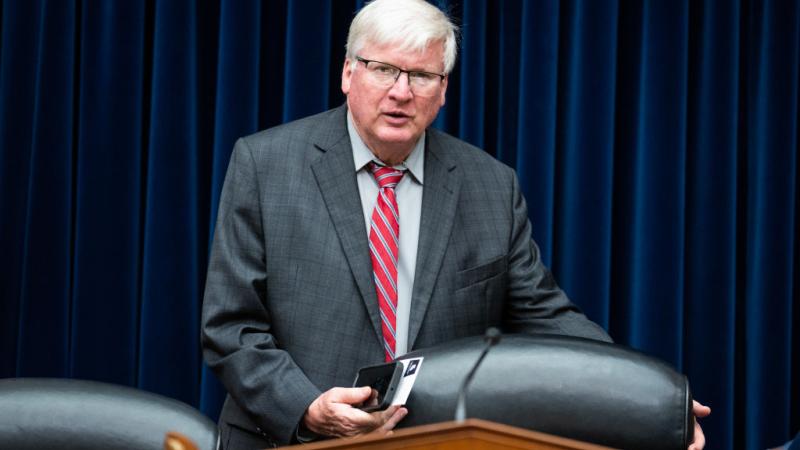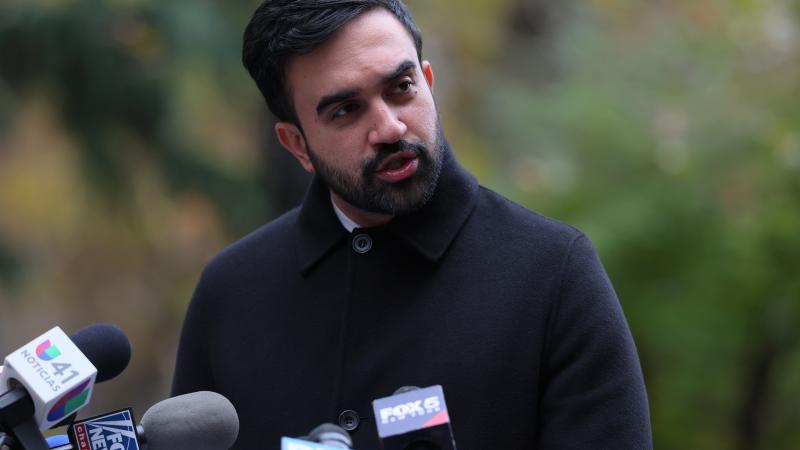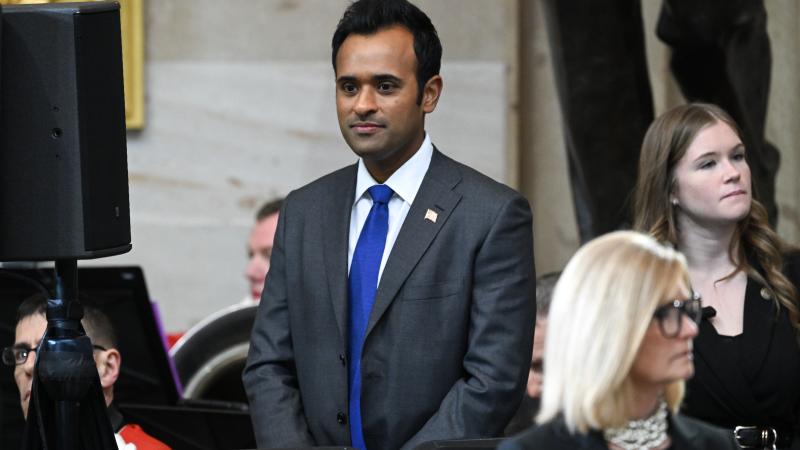Repeal of the EPA endangerment finding vital to Trump’s unleashing American energy agenda: experts
A panel of experts from the Heartland Institute, the Energy and Environment Legal Institute, the American Energy Institute, and the Committee for a Constructive Tomorrow say there are a dozen reasons to repeal the EPA's endangerment finding. And there are multiple ways to make it happen, none of which will be easy.
Environmental Protection Agency Administrator Lee Zeldin generated a huge buzz last month when he announced his intention to take 31 “historic actions” to roll back the Biden-Harris administration’s climate agenda.
Among the regulations he said would be targeted in this sweeping rollback is the "endangerment finding," an Obama-era artifact that determined that carbon dioxide emissions pose a risk to health and human well-being. Under this determination, the EPA granted itself the authority to regulate those emissions and many climate policies stem from it. An endangerment finding establishes that a specific pollutant poses a threat to public health, which, under the Clean Air Act, allows the EPA to implement regulations to control emissions of that pollutant.
A panel of experts from the Heartland Institute, the Energy and Environment Legal Institute, the American Energy Institute, and the Committee for a Constructive Tomorrow say that repealing the finding is key to many goals of Trump’s “unleashing American energy” agenda. In an Earth Day 2025 report, they listed 12 reasons why the EPA should reverse the finding, including reindustrializing America, ending over-regulation, promoting agriculture, reducing government waste, and improving environmental protection.
Two paths
Zeldin’s announcement didn’t provide details about what the priorities would be, nor was any timeline given for the regulatory rollbacks. Steve Milloy, senior legal fellow with the Energy and Environmental Legal Institute and publisher of “JunkScience.com,” said Wednesday in a webinar on the report that there are a couple of ways the EPA could go about repealing the finding.
The first is through the agency’s rulemaking process. A proposed rule would be published in the Federal Register, and it would be available for public comment. The agency would then draft a final rule. After Zeldin signs off on the draft, it would be published in the Federal Register.
The other way the rule could be repealed, Milloy explained, is under Trump’s “Directing The Repeal of Unlawful Regulations” executive order, which was signed last week. The order states that recent rulings by the Supreme Court recognized constitutional boundaries on the power of unelected bureaucrats. Yet, despite those rulings, according to the order, some unlawful regulations remain on the books.
Among the court decisions the order cites as priorities for agency heads to consider in their review of possible unlawful regulations is the West Virginia v. EPA Supreme Court case. In the 2022 case, the justices ruled 6-3 that Congress did not grant the EPA the authority to set emissions limits based on a shift in electricity generation.
Any rule repealed under the executive order would not be required to go through the comment period, but could be reversed easily by future presidents.
Legal challenges
Milloy said that the conventional rulemaking process would face legal challenges, and if Zeldin went that route, he’d have to take his chances in court that the repeal would stand. Following Trump’s executive order, Milloy said Zeldin could terminate the endangerment finding immediately as being unlawful and against Supreme Court rulings.
“It seems to me that would be the quickest way and really the most sensible way, because the endangerment finding is clearly illegal under West Virginia v. EPA,” Milloy said.
Prior to former President Barack Obama's taking office in January 2009, the Supreme Court ruled in Massachusetts v. EPA that greenhouse gas emissions fit the Clean Air Act’s definition of an “air pollutant.” As a result, the EPA is required to determine if emissions endanger public health and the welfare of the public, or if the science is too uncertain to make such a determination.
The Obama administration’s EPA proposed the endangerment finding in April 2009, just a few months after Obama took office, and it was finalized the following December. Emails reviewed by Just the News showed that EPA regulators who helped craft the finding were preparing to impose the regulatory powers of the endangerment finding even before the science was wrapped up. The emails also show there was an open discussion inside the Obama EPA about trying to score a win for liberals in what was supposed to be a scientific process.
Milloy said that whatever avenue Zeldin takes to overturn the endangerment finding, it’s going to end up in court. Should Zeldin repeal the finding under Trump’s executive order and legal challenges end up in the Supreme Court, Milloy said, the case would be reviewing the constitutionality of Massachusetts v EPA.
“There's a good chance that that decision would be overturned, ending EPA regulation once and for all. Litigation after notice and comment would be less certain,” Milloy said.
Other options
Dr. Sterling Burnett, director of the Arthur B. Robinson Center on Climate and Environmental Policy at the Heartland Institute, said another way the rule could be overturned is through litigation. The attorney general could sue to overturn the endangerment finding, he said.
By citing West Virginia v EPA, he explained, it would force the court to consider whether West Virginia is in conflict with Massachusetts v EPA. Since regulating greenhouse gas emissions across thousands of sources throughout the entire country invokes the major questions doctrine, which says that federal regulations with major national implications require explicit authorization from Congress, Burnett said the high court would likely side with West Virginia.
Another approach, Burnett said, is for the matter to go to Congress. “Congress could say greenhouse gases are not pollutants and shall not be regulated by the EPA unless we say so explicitly,” he said. Such a law would have to pass both houses, which would likely be a difficult challenge, Burnett added.
“Honestly, all of these are going to be hard to do,” he said.
Protecting the environment
If the repeal were achieved, the panelists argued, the U.S. would have a lot to gain. Craig Rucker, president and co-founder of CFACT, said the repeal would protect the environment, which is under threat from renewable energy. “The biggest thing the environment has to fear is environmentalist policies,” he said.
Wind and solar farms, he explained, require large amounts of space, which destroys species’ habitat, despoils the nation’s coasts, and endangers whales, among other impacts. He said rules flowing from the endangerment finding also undermine consumer choice through appliance efficiency standards, which effectively ban a wide range of products from some types of dishwashers to wood-fired stoves. A repeal of the finding, he said, would also eliminate government waste.
“Tremendous sums of money have been funneled to radical organizations — just waste, fraud and abuse in the name of trying to protect you from climate change, again, driven by the endangerment finding,” Rucker said.
Cult-like fascination
Jason Isaac, founder and CEO of the American Energy Institute, said repealing the endangerment finding is key to energy abundance. Its repeal, he said, would remove regulatory burdens, which would speed up access to more LNG terminals “so that we can get affordable, reliable energy to our allies and friends around the world.”
He said the endangerment finding also led to numerous regulations that create an electric vehicle mandate — from the EPA’s tailpipe emission standards to the National Highway Transportation Safety Administration’s Corporate Average Fuel Economy standards.
“This wouldn't be in place if it were not for the endangerment finding and the cult-like fascination with reducing greenhouse gas emissions,” Isaac said, referring to previous administrations.
Zeldin has yet to make any moves against the finding, other than to state he intends to do so. A month before he announced his 31 “historical actions,” he was reportedly asking the White House to strike down the finding. It’s likely just a matter of time before he takes some action against it.
The Facts Inside Our Reporter's Notebook
Documents
Links
- announced his intention
- Heartland Institute
- Energy and Environment Legal Institute
- American Energy Institute
- Committee for a Constructive Tomorrow
- Energy and Environmental Legal Institute
- JunkScience.com
- rulemaking process
- Federal Register
- Directing The Repeal of Unlawful Regulations
- West Virginia v. EPA
- Massachusetts v. EPA
- Emails reviewed by Just the News
- Dr. Sterling Burnett
- major questions doctrine
- tailpipe emission standards
- Corporate Average Fuel Economy
- reportedly asking the White House














